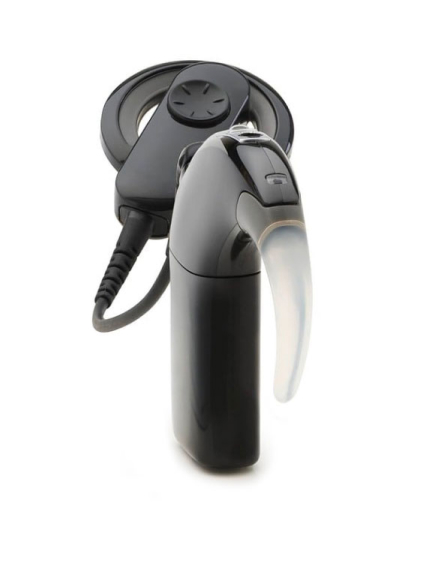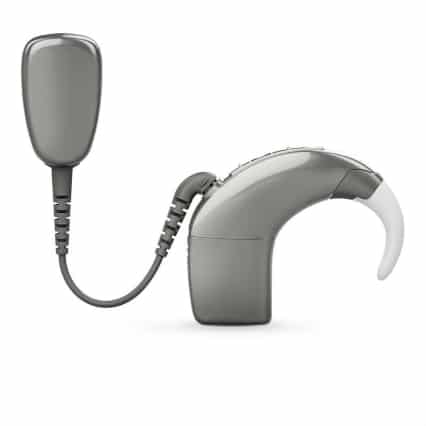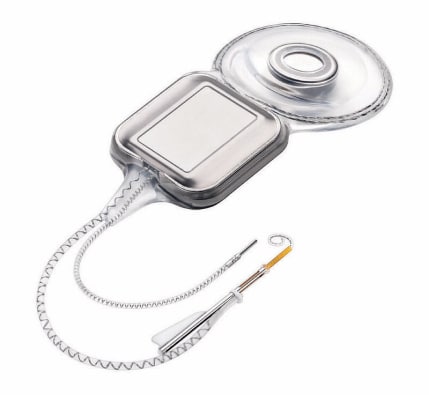
Hearing aids are a blessing to millions of Americans with hearing loss. But as well as they perform, they do have their limitations.
They won’t work for all types or severities of hearing loss. For some individuals, implantable hearing devices might be the key to improved communication.
Implantable hearing devices are surgically implanted instruments.
There are several different types of implantable hearing devices; these include cochlear implants, bone anchored hearing aids and auditory brainstem implants.

Types of Implantable Hearing Devices
Cochlear Implants
Cochlear implants are devices that are implanted surgically behind the ear. They contain an external portion consisting of a microphone, sound processor and transmitter, and an internal portion that includes a receiver and a group of electrodes.
How Does a Cochlear Implant Work?
The microphone picks up sounds in the environment, which are then converted by the sound processor into electronic signals that are sent to the transmitter. The transmitter forwards these signals to the receiver, where they are then passed on to the electrodes. The electrodes stimulate the auditory nerve, which carries the information directly to the brain, where it is interpreted as sound.
Cochlear implants allow those who no longer benefit from hearing aids to have improved clarity and understanding of speech and other sounds.

Bone Anchored Hearing Devices
Bone-anchored hearing devices consist of an implant and an external processor. This system bypasses the auditory canal and middle ear, transmitting sound vibrations through the external component to the internal implant, which delivers the signal directly to the internal hearing organ (the cochlea).
How Does a Bone Anchored Hearing Device Work?
The bones of the skull act as conductors, transmitting these sound vibrations to the inner ear, where the nerve fibers responsible for hearing are stimulated. A bone-anchored hearing device is especially useful for patients with conductive hearing loss and single-sided deafness.

Auditory Brainstem Implants
Auditory brainstem implants (ABI) are similar in concept to cochlear implants, but rely on electrodes placed directly on the brainstem that relay electronic signals to the brain. ABIs are less common, usually reserved for individuals whose auditory nerve does not function properly due to disease or trauma.
The majority of cases are related to a rare type of tumor known as neurofibromatosis type II (NF2). These patients have sensorineural hearing loss and, because the auditory nerve is damaged, do not benefit from cochlear implants.
Call Audiology Associates of Redding at 530-221-7380 for more information or to schedule an appointment.